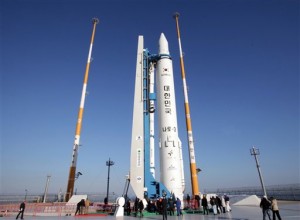PH lifts no fly zone after successful launch of South Korean rocket
The Philippines on Wednesday lifted a ban on air and sea activities in the country’s eastern flank after South Korea announced the successful launch of its science and technology satellite.
“We now declare that the ‘no-fly, no-sail, and no-fish’ area in the eastern portion of the Philippines has been lifted effective immediately,” said Benito Ramos, executive director of the National Disaster Risk Reduction and Management Council.
Ramos said Col. Eddie Ireneo Maningding, the Philippine military attaché in Seoul, had sent him a text message about the successful launch at 3:02 p.m., Philippine time, of the South Korean satellite.
No way of confirming
Article continues after this advertisement
“We can assume that the first stage disintegrated at around 3:17 p.m. and debris from the payload fairing (a main component of the satellite) fell at 3:21 p.m.,” Ramos said.
Article continues after this advertisementThe government has no way of confirming if the satellite’s booster had burned, disintegrated or fallen into the Pacific, he said.
But Ramos said government agencies, including the Navy, Coast Guard, Philippine National Police and the Philippine Nuclear Research Institute remained on alert.
Ramos said he did not expect any debris to be seen in Philippine waters in the same way that none was spotted after North Korea launched last December its rocket, which passed through Cagayan Valley.
“There were no debris and dead fish have not floated, which would mean there were toxic chemicals,” he said.
“We are hoping that there were no accidents in this case because the area where the debris is expected to fall is very far (from populated areas). It’s 540 kilometers east of the Philippines.” Ramos said.
The parts of the satellite are made of aluminum alloy, which is harmless, according to Max Sacro, a rocket expert consulted by Ramos. With Frances Mangosing, INQUIRER.net
Originally posted: 5:16 pm | Wednesday, January 30th, 2013
